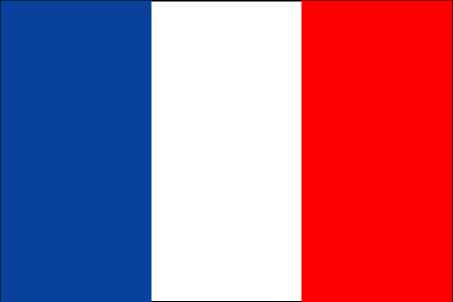
- "Boucle Centre-Artibonite" d'Haïti FR ES
- Antigua-et-Barbuda FR
- Bahamas FR
- Barbados
- Haïti FR
- Haïti : De ruptures en ruptures, un territoire en mutation FR ES
- Haïti : La persistance d'un état de crise et de la crise de l'Etat FR ES
- Haïti : SItuation de l'agriculture 2024 FR
- Haïti : les empreintes majeures d'une identité plurielle FR ES
- Jamaïque FR
- La Guyane : un des derniers Far West FR
- La Martinique : un mal développement îlien FR ES
- Martinique
- Port of Fort-de-France (Martinique)
- Port of Pointe-à-Pitre/Jarry (Guadeloupe)
- Puerto Rico
- République dominicaine FR ES
- St. Vincent and the Grenadines
- Trinidad and Tobago (2000-2005)
- Venezuela FR
|
Martinique
French department since 19.03.1946 |
|
The French national flag or 'Tricolour' is the national emblem of the French Republic. The three colours represent liberty used by the different French flags of the old regime im pre-Revolutionary France. |
|
General information
Area: island covering 1 080 km2, 80 km long and 39 km wide
Location: 14°40'N 61°W Highest landmark: Mount Pelée (1 397 m)
'Chef-lieu' (principal place): Fort-de-France: 90 347 hab., main seaport. Population (2010): 399 637 inhhab. Everyday languages: french, creole. Currency: Euro National Day: 14th July |
Political regime
Political structure is identical to that of a French department. Latter is admiknistered by a general council, chaired by the departmental president Josette
Manin. Since 1981: French region, administered by a regional council, under current president Serge Letchimy. Currently underway: establishment of a single collectivity, fusing the powers of the two previous assemblies (department and region). Deputies: Alfred Marie-Jeanne, Alfred Almont, Louis-Joseph Manscour et Serge Letchimy elected in 2007. Senators: Maurice Antiste et Serge Larcher elected in 2011. |
Brief History In 1635 when the French colonised Martinique, the island was populated by Amerindians, the Kalinagos . The name of the island comes from the Amerindian 'Martinino.' The wealth of the island developed from plantation agriculture (cacao, coffee, sugar cane) with a labour force made up of slaves originally from Africa. Slavery was abolished in 1848. Today Martinique is both an overseas French region and department. It is part of the American French Departments in the same way as Guiana and Guadeloupe, and the Martinique region is also designated as one of the outermost region (OMR) of the European Union. |
|
Demographic data
Life expectancy (2009):
Female: 84.3 years Literacy rate (2008): 97.7% Density (2010) 370 hab./km2 Religion: majority Catholic. Other groups represented: Jehovah's Witness, Evangelical, Pentecostal, Seventh-day Adventist Church, Islamist, Jews, Hindous, Rastas, Voodoo.
HDI: 0.880 (2000) (most recent official figure published for the department, INSEE, HDR 2002) |
Economic data
GDP (2010): 8.1 billion € (CEROM-INSEE)
GDP per capita (2010): 19 160 € (CEROM-INSEE) Rate of growth (2009): - 6% Active population (2009): agriculture 6%, industry 10.7%, construction 9.2%, services 74.1% Unemployment rate (2010): 21.2% (CEROM-INSEE)
Rate of inflationn (2010): 1.6% (CEROM-INSEE)
Banana production represents a strong sector as regards exports (180 000 tons) as well as
agro-industrial products, with Martinique rum obtaining an AOC appellation in 1996. |
Cultural particularities
22 mai: commemoration of the abolition of slavery February-March (meat days): carnivall Traditional sports activities: round Martinique yawl race Traditions: cock-fighting; music: bèlè, biguin, mazurka, zouk. National dish: creole dishes: accras (fritted struffed with vegetables or cod), "féroce" of avocado, stuffed crabs; grilled fish, "Blaff" of fish, "z'habitants" soup; "Blanc-manger" coconut.
Drink: Ti'Punch: white rum, cane syrup, lime.
Personalities: |
top
|
  |














